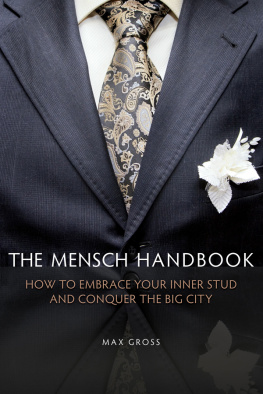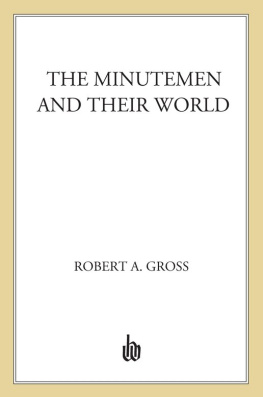The Making of the Potterverse
The Making of the Potterverse
A Month-by-Month Look at Harrys First 10 Years
SCOTT THOMAS


Copyright Scott Thomas, 2007
Published by ECW PRESS
2120 Queen Street East, Suite 200, Toronto, Ontario, Canada M4E 1E2
All rights reserved. No part of this publication may be reproduced, stored in a retrieval system, or transmitted in any form by any process electronic, mechanical, photocopying, recording, or otherwise without the prior written permission of the copyright owners and ECW PRESS.
LIBRARY AND ARCHIVES CANADA CATALOGUING IN PUBLICATION
Scott Thomas
The making of the Potterverse :
a month-by-month look at Harrys first 10 years / Scott Thomas.
ISBN-13: 978-1-55022-763-5
ISBN-10: 1-55022-763-7
1. Rowling, J. K.Criticism and interpretation.
2. Rowling, J.K.CharactersHarry Potter.
3. Childrens stories, EnglishHistory and criticism.
4. Fantasy fiction, EnglishHistory and criticism.
5. Potter, Harry (Fictitious character) I. Title.
PR6068.O94Z65 2007 823.914 C2006-906904-2
Developing editor: Jennifer Hale
Cover and text design: Tania Craan
Typesetting: Gail Nina
Printed by Transcontinental
DISTRIBUTION
CANADA: Jaguar Book Group, 100 Armstrong Avenue, Georgetown, on, L7G 5S4
UNITED STATES: Independent Publishers Group, 814 North Franklin Street,
Chicago, Illinois 60610
PRINTED AND BOUND IN CANADA

To my wife, Eileen, who keeps the magic alive in our relationship.
The Making of the Potterverse
AN INTRODUCTION

In 1992, Harry Potter was the son of a World War II bomber pilot who was being honored posthumously.
Two years after that, he was an accountant.
And two years after that, he found himself serving Texas as Assistant Attorney General.
No disrespect intended to those Harry Potters, but their accomplishments, big or small, simply cant compare to the Harry Potter who was born 10 years ago as the lead character of J.K. Rowlings first published work of fiction Harry Potter and the Philosophers Stone. That Harry Potter captured the imagination of the world, changed the fate of his creator and made stockholders in numerous publishing companies and one Hollywood studio very happy.
Ten years on its difficult to imagine a time when Harry Potter, Hermione Granger, Ron Weasley and Hogwarts School of Witchcraft and Wizardry werent in the popular vernacular. There was, indeed, a pre-Harry world; it just wasnt as much fun.
In under a decade, Rowling has joined such literary luminaries as Lewis Carroll, L. Frank Baum, J.R.R. Tolkien and Roald Dahl, and created a realm that is every bit as fanciful as theirs, whether it be Wonderland, Oz, Middle Earth or Willy Wonkas chocolate factory. And, most importantly, the audience has completely fallen in love with that realm, embracing each novel as it is published as well as each movie adaptation, and elevating Rowling herself to the literary equivalent of a rock star. But maybe her success isnt all that surprising when you consider her background and the journey shes been on from destitute single mother to billionaire author. Rowlings creative spirit has touched the heart of the global audience in a way that few authors have been able to, and her life story, in itself, is a tale as magical as anything Harry has been through.
If you have any doubts, just consider the way in which Harry was created. I had the idea for Harry on a train in the summer of 1990, she explained. In fact, she has described the scene in a number of interviews. I was sitting on the train. I was staring out the window. As far as I can remember, I was staring at some cows not the most inspiring subject and the idea just came. I cannot tell you why or what happened to trigger it. It was the purest stroke of inspiration Ive ever had. And Id been writing for years and never tried to get anything published. Harry came pretty much fully formed. I saw him very clearly. I could see this skinny little boy with black hair, this weird scar on his forehead. I knew instantly that he was a wizard, but he didnt know that yet. Then I began to work out his background. That was the basic idea. I didnt know then that it was going to be a book for children. I just knew that I had this boy, Harry. During the [train] journey I also discovered Ron, Nearly Headless Nick, Hagrid and Peeves. But with the idea of my life careening round my head, I didnt have a pen that worked. And I never went anywhere without my pen and notebook. So, rather than trying to write it, I had to think it. And I think that was a very good thing. I was besieged by a mass of detail and if it didnt survive that journey, it probably wasnt worth remembering.
When I was younger, I think my greatest fantasy would have been to find out that I had powers that Id never dreamt of. That I was special. That these people couldnt be my parents, Im far more interesting than that. I think a lot of children might have secretly thought that sometimes. So I just took that one stage further and I thought, Whats the best way of breaking free of that? Okay, youre magic.
And so is the entire Harry Potter phenomenon; a phenomenon that we celebrate in The Making of the Potterverse, bringing you through a decade of Harry-related headlines, month by month and year by year. In that period, the world has changed in so many ways and not all for the better, but Harry Potter and the work of J.K. Rowling serve as an escape when our reality gets too overwhelming, offering friends we can count on to do whats right and touching us with a little bit of magic. And you can never have too much magic.
Scott Thomas

Spring 1997
In an article that begins with the words A young author has sold her first book to an American publisher for more than 100,000 pounds, J.K. Rowling was introduced to the world thanks to a piece in the Telegraph. Like most of the articles of the time, it detailed that Rowling was a single mother who wrote as often as she could, relied for a time on public assistance and then, some would say miraculously, made her sale. In describing Harrys adventures, the journalist noted, It tells the story of Harry Potter, an orphan who thinks he is an ordinary boy, brought up by a cruel uncle and aunt. He discovers that he is a wizard and, as in C.S. Lewis Narnia series, he passes through a time warp into a world of make-believe. Encouraged by her success, Miss Rowling plans a further six books recounting the adventures of Harry Potter. The book, titled Harry Potter and the Philosophers Stone, was published on June 26, 1997, in the United Kingdom.
Producer David Heyman caught wind of Harry Potter at about this time. As he explained, he had had started his company, Heyman Films, with the intention of producing films that would be appropriate for his brother and sister, who were 10 and 14 at the time. My Head of Development, Tanya Seghatchian, read an article about a new childrens book by a then-unknown author, he explained. The agent sent her a copy and my assistant Nisha read it over the weekend. Nisha reported that it was a curious book about a young boy who goes to wizard school. I thought it was a wonderful idea and read the novel that evening. What I thought was a great idea turned out to be an even more remarkable book, and so much richer than the idea that initially attracted me. I realized this was something very special and began pursuing the rights the following morning. He added that when he met J.K. Rowling, I made her a promise to be true to her vision. This was and has been the most important consideration to me throughout the process. I told her how I wanted to keep the darkness and the edge of the material intact. I also think Jo was excited by the fact that I wanted her to be involved in the creative process. And she was an invaluable collaborator. Her inspiration and ideas were absolutely wonderful.
Next page












![J K Rowling - Harry Potter [Complete Collection]](/uploads/posts/book/117015/thumbs/j-k-rowling-harry-potter-complete-collection.jpg)





